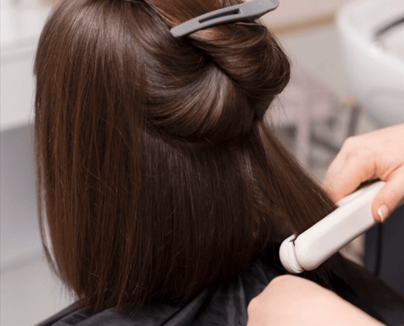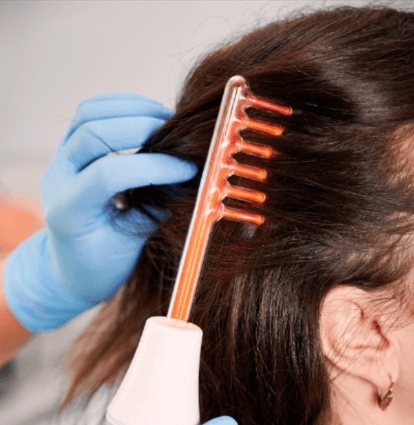Melasma is most commonly seen in adults aged 20–40, especially women, but it can also affect teenagers—particularly those undergoing hormonal shifts due to puberty, birth control, or early onset polycystic ovary syndrome (PCOS). Treating melasma in adolescents requires a gentle, customized, and medically cautious approach, and Korean dermatology clinics are highly experienced in managing pigmentation issues with advanced, skin-type-safe technologies.
In this article, we’ll explore how Korean dermatologists approach melasma in teenage patients, what makes their approach unique, and the safe treatment options available for this sensitive age group.
🧬 Why Teens Get Melasma: Understanding the Underlying Causes
Melasma in adolescents is uncommon but not unheard of. Common contributing factors include:
- Puberty-induced hormonal fluctuations
- Oral contraceptives or hormone therapy
- PCOS or endocrine disorders
- Genetic predisposition (family history of melasma or hyperpigmentation)
- Excessive sun exposure or unprotected outdoor activity
- Use of irritating skincare products or DIY peels
📌 Korean dermatologists typically begin treatment with a detailed skin history, hormone review, and visual analysis using VISIA or OBSERV imaging systems.
👩⚕️ Initial Medical Assessment in Korean Clinics
Teenage skin is still developing and highly reactive. That’s why most Korean dermatologists begin with:
1. Skin Type Classification
- Fitzpatrick skin type (I–VI)
- Oiliness, sensitivity, barrier integrity
2. Melasma Classification
- Epidermal, dermal, or mixed
- Presence of post-inflammatory hyperpigmentation (PIH)
- Redness/vascular components
3. Lifestyle & Hormonal Evaluation
- Birth control use
- Family medical history (especially PCOS, thyroid, or adrenal conditions)
- Daily sun exposure habits
📋 Parental consent is required for all medical or laser procedures on minors under Korean law.
🚫 Treatments Typically Avoided for Teen Patients
Due to increased sensitivity and long-term risk, Korean clinics usually avoid the following for teen melasma:
| Treatment | Reason for Caution |
|---|---|
| High-fluence lasers | Risk of rebound pigmentation and skin barrier disruption |
| Strong topical steroids | May thin the skin and worsen pigmentation over time |
| Deep chemical peels | Can damage young skin, increase risk of PIH |
| Oral tranexamic acid (TXA) | Typically not prescribed to teens unless under special medical supervision |
✅ Safe and Effective Treatments for Teen Melasma in Korea
Korean dermatologists prioritize non-invasive, barrier-supportive therapies for adolescent patients.
1. Topical Treatments (First Line)
These are the safest and most effective initial step:
- Niacinamide: Reduces pigment formation and improves barrier health
- Azelaic Acid 10–15%: Anti-inflammatory and safe for acne-prone teenage skin
- Low-strength Tranexamic Acid creams (2–5%): Suppresses melanin activity
- SPF 50+/PA++++ Sunscreen: Essential daily use
🧴 Prescription compound creams are customized for each teen patient and usually include 1–2 active ingredients to minimize irritation.
2. Barrier-Strengthening & Brightening Skincare
Many Korean clinics recommend K-beauty products that soothe and protect young skin:
- Centella Asiatica (Cica) creams for inflammation
- Ceramide-based moisturizers
- Green tea and licorice root extracts to brighten skin naturally
🌿 Brands like Dr.G, La Roche-Posay, Atopalm, and Round Lab are commonly used in clinic protocols.
3. Low-Fluence Laser Toning (Optional)
If melasma is persistent and topical therapy isn’t enough, Q-switched Nd:YAG low-fluence toning may be considered.
- Safe for most skin tones
- No downtime
- Carried out with strict protocols (e.g., test patching, 2–4-week intervals)
- Paired with antioxidants and moisturizers to reduce sensitivity
💡 Typically not started until age 16+, and only with informed consent from guardians.
4. LED Therapy (Supporting Treatment)
- Blue and red light therapy can help reduce inflammation and improve skin tone.
- Often combined with masks or serums to calm post-laser skin or support barrier healing.
5. Sun Protection Counseling
For teens, education on sun safety is essential:
- Reapply sunscreen every 2–3 hours (especially during school outdoor activities)
- Use physical blockers (zinc oxide, titanium dioxide)
- Wear wide-brimmed hats or visors
- Avoid peak UV hours (10am–3pm)
☀️ Some clinics also recommend oral photoprotectants like Polypodium leucotomos, but these are usually reserved for older teens and require parental approval.
🏥 Example: Teen Melasma Treatment Protocol in a Korean Clinic
14-Year-Old Female, Mixed-Type Melasma, Fitzpatrick Type III
| Week | Treatment |
|---|---|
| 1 | VISIA analysis + start of topical niacinamide + SPF |
| 2 | Add azelaic acid 15% cream (every other night) |
| 3 | LED red light session + moisturizing mask |
| 5 | Optional: first low-fluence laser toning (after test patch) |
| 6–8 | Follow-up, adjust prescription, barrier repair cream provided |
📞 Parents are included in every step and given instructions for home care.
📌 Parental Consent & Psychological Consideration
Korean dermatologists take a conservative and ethical approach when treating teenagers:
- Parental/legal guardian consent is mandatory
- Emotional well-being is assessed; if melasma is causing low self-esteem, a gentler treatment strategy is emphasized
- Clinics avoid overpromising and encourage long-term education about skin care
🏥 Trusted Korean Clinics for Teen Melasma Treatment
These clinics are known for safe, youth-focused pigmentation care:
| Clinic | Location | Key Features |
|---|---|---|
| MUSE Dermatology | Gangnam | Customized teen skincare, LED + topical plans |
| Oracle Dermatology | Nationwide | Youth-safe laser protocols, acne-pigment crossover care |
| ME Clinic | Gangnam | Gentle pigmentation therapies, teen counseling |
| Banobagi Dermatology | Seoul | Pediatric-safe protocols and VISIA diagnostics |
✅ Key Takeaways for Teen Melasma Care in Korea
- Gentle, safe treatment is the priority in Korean clinics for teens with melasma.
- Topicals like niacinamide and azelaic acid are first-line options.
- Lasers may be used, but only low-energy and after barrier support.
- Clinics focus on education, sun protection, and skin resilience.
- Parental involvement is required for both consent and home support.




